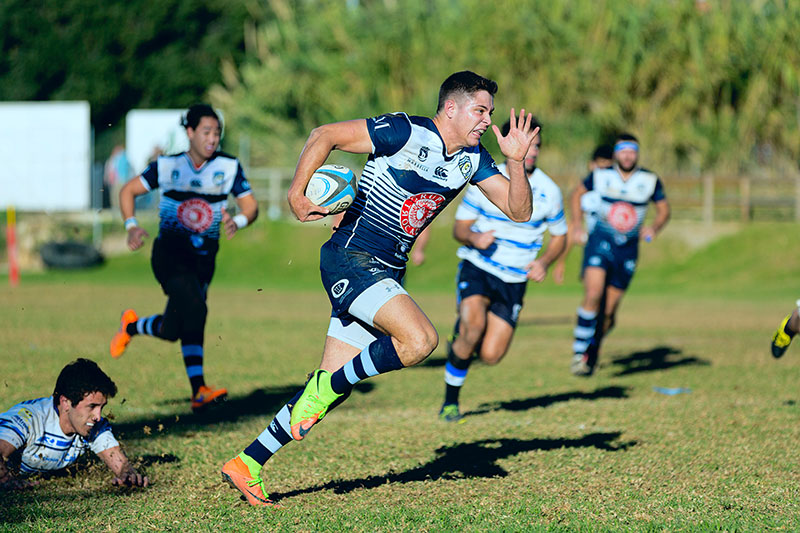
By Kiarra Walters and Dr. Robert Herron |
Aerobic training tends to get overlooked in sports like rugby because the competitors are big and powerful athletes. However, aerobic training is imperative for rugby performance. Rugby, specifically rugby union, is a multidirectional and dynamic contact sport that is played by various countries worldwide. A rugby game consists of two 40-minute halves. Rugby players are required to maintain substantial physical workloads for intermittent, high-intensity efforts combined with lower-intensity aerobic activity. Knowledge of rugby’s anaerobic and aerobic demands and requirements is necessary to optimally train athletes for success.
To achieve optimal performance, rugby players must be competent in and execute various movements and sport-specific activities. There are many positions in a rugby team that perform distinct roles and therefore have different training needs and fitness requirements. Despite the various positions, all players need the capacity to perform and repeat movements such as acceleration/ deceleration, agility, jogging, sprinting, tackling, rucking, scrummaging, mauling, and passing.
Metabolically, rugby players rely on aerobic and anaerobic energy systems to meet the demands and accomplish the intermittent, high-intensity repeated movements for the duration of the game. Sprints, tackling, rucking and other explosive powerful movements are performed at a rapid rate that uses the anaerobic system to supply the energy to the working muscles. The prolonged game play forces the players to require recovery (walking and jogging) between the maximal effort movements as well as being able to repeatedly perform them over the course of the game. The aerobic system provides fuel to the lower intensity activities between the maximal efforts to helps support recovery for the multiple high intensity movements.
Rugby is an interesting sport from an energy system requirement perspective because of the variety of different demands unique to the game, player and position. Physical performance and anthropometric characteristics tend to dictate individual strengths and weaknesses. Typically, ‘forwards’ will be heavier and stronger players who tackle more than the ‘backs’ who run more and are usually leaner individuals. A study showed that on average athletes during a competitive match can cover approximately 7 km (≈ 4.3 miles) which requires players to acquire aerobic-type training stimuli. This distance varies between positions, ‘backline’ players have displayed in studies to have a higher peak VO2 and lower body mass and fat percentage when compared to the ‘forwards’. This is a significant distance to cover over a single game; so, endurance-based aerobic training needs to be constantly considered throughout the duration of the training plan.
Aerobic training for rugby players will differ throughout the course of the competition year. Most of the main aerobic training stimuli will be conducted during the off-season training block. This may include longer aerobic activities like running for distance training. The coaching staff then will typically reduce aerobic training slightly and incorporate more speed, agility, strength and power training. Aerobic activities will still be part of the training block to prepare players for the longer season but will be shorter duration. If high loads of aerobic training were prioritized for players during in-season, strength and power training response could be muted and players may also be more fatigued for the games. During the competitive season, aerobic training will be reduced to allow players to focus on game plays as well as stimulate strength and power to perform the explosive maximal efforts during their games each week.
Kiarra Walters is Graduate Student in the Exercise and Nutrition Science Program at the University of Montevallo. Notably, Kia has been recognized on the Gulf South Conference Honor Roll as a standout on the Cross-Country team for multiple years and is from Brisbane, Australia.
Robert L. Herron, Ed.D., NSCA-CSCS*D, ACSM-CEP is an Assistant Professor in the Exercise and Nutrition Science Program at the University of Montevallo. Dr. Herron is a Certified Strength and Conditioning Specialist® with distinction from the National Strength and Conditioning Association (NSCA-CSCS*D®) and a Clinical Exercise Physiologist through the American College of Sports Medicine (ACSM-CEP®). Dr. Herron is a graduate of the United States Sports Academy and serves as a Non-Resident Faculty Member.